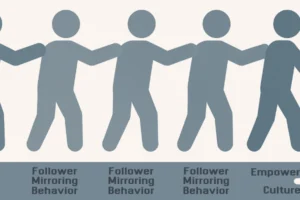Beware of Self-Serving Bias
Self-serving bias is a cognitive or perceptual process distorted by the need to maintain and enhance self-esteem or the tendency to perceive oneself in an overly favorable manner. Unfortunately, it is all too common. Regarding Organizational leadership, it can be detrimental.
From a leadership point of view, self-serving bias is when a person or organization takes personal credit for success while blaming outside sources for failures. This is a terrible trap and can set the organization up for failure long-term because decisions for that organization are based on performance reports. Those reports could be skewed if self-serving bias creeps in. Leaders within an organization must look out for such traps.
While sometimes hard to spot, self-serving bias can be identified. However, it usually takes a strong examination over some time or a keen eye at the moment, along with plenty of contexts. Regardless, if a series of reports presented by leadership continues to follow the pattern – BEWARE! I will demonstrate this with a scenario for clarification.
Scenario:
Economic times are hard. The CPI shows a current rate of just over 2%. Based on more real and tangible standards, the actual rate can be gauged at over 6%. This equates to the dollar simply not going as far as it used to. Why? This is because the inflation is compounded by the inflation that came before it, to the tune of over 2,280% since 1914.
This is bad news for consumers. The simple result is that people may not be able to buy as much while policymakers scramble to figure out what to do about it. It’s also bad news for producers and retailers because prices increase. Situations like this have resulted in the package manipulation stories we have all become familiar with, where cereal boxes become thinner, cans are not filled all the way, or when the bottom of containers gets a divot.
Despite the hardship, the world doesn’t stop turning. People still need goods, and companies must still turn a profit. Grocery stores are a great example of this, and horrible economic indicators do not mean that store managers get to stop answering to their corporate leaders or shareholders.
Self-Serving Bias Examples:
#1 – Sales are down. The grocery store managers suggest that the economic climate is to blame for poor performance.
#2 – Sales are up. Managers claim a victory and attribute this victory to processes or leadership for good performance in the face of economic hardship.
While either might be true to a certain extent, the situation is clearly more complex than what was claimed. A decent market or trend analysis can usually verify this. Such claims (either way) should be measured against the other factors that are available for review.
Many different examples could be used here. Regardless, self-serving bias is not a good thing. It can often result in poor decisions that are based on flawed information. If you see this pattern, review the details yourself and act accordingly.
Be sure to read my article titled, “The Effects of Bias Affecting Leadership.”




